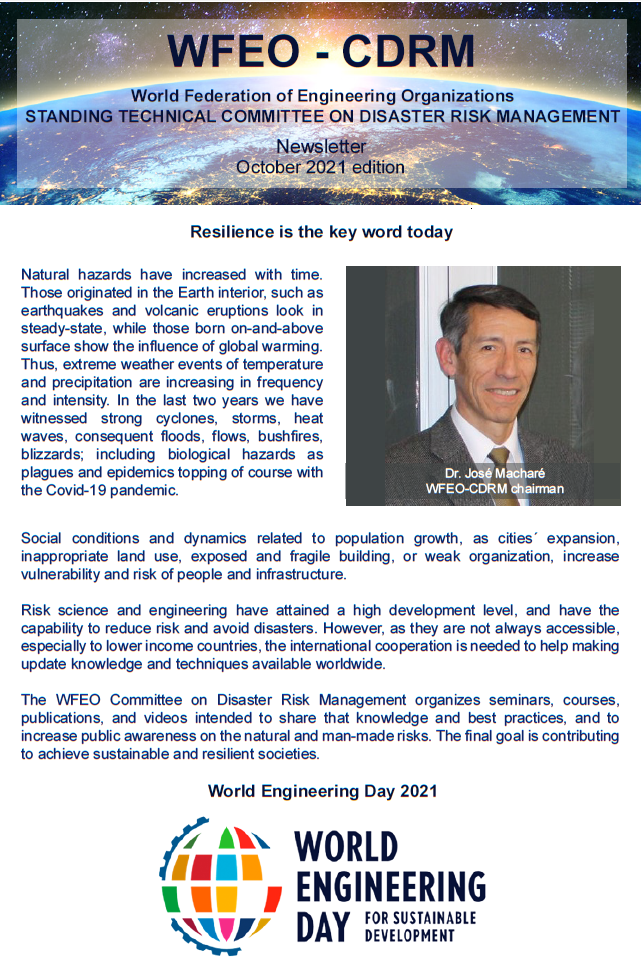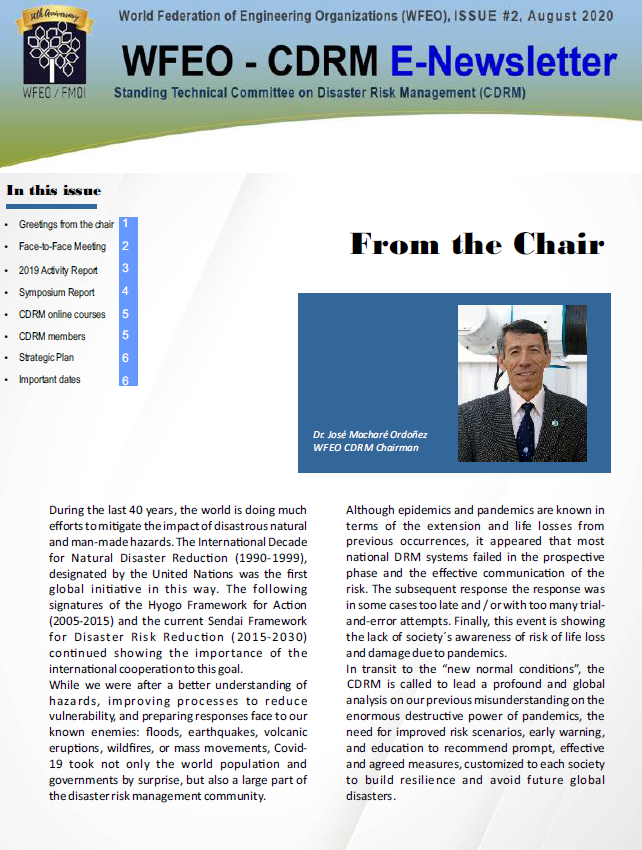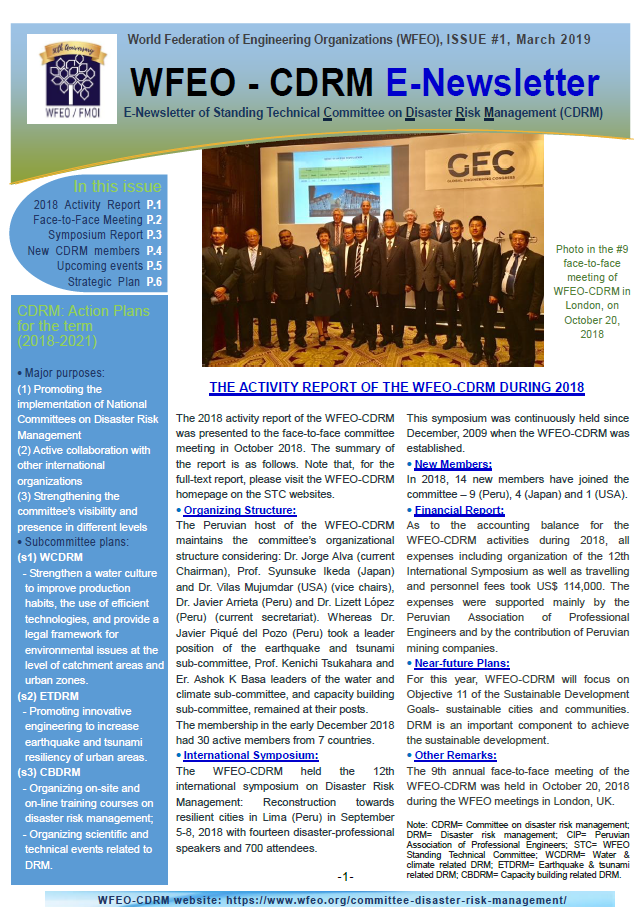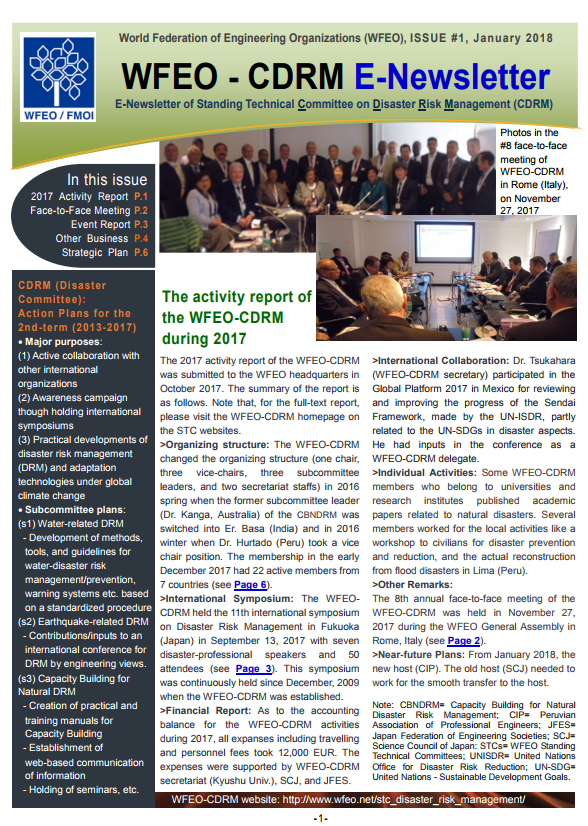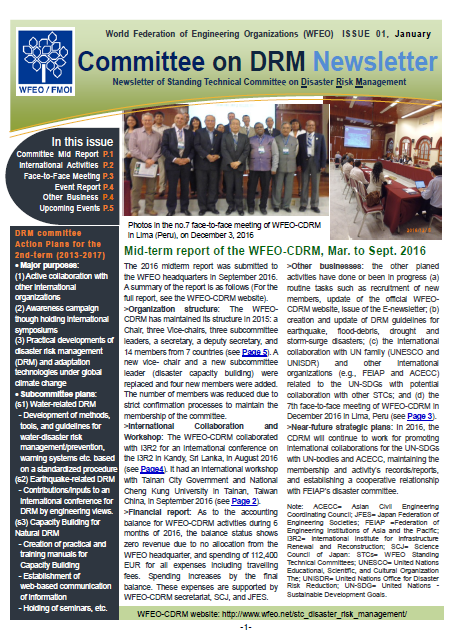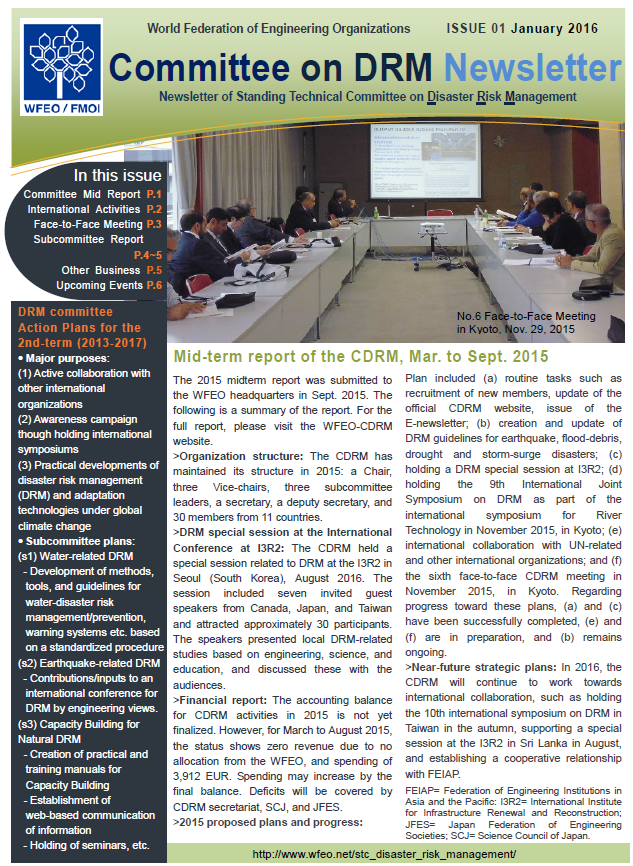
Background
The Committee on Disaster Risk Management (CDRM) was established at the WFEO General Assembly held in December 2009, Kuwait, having as role minimizing the potential damage and risk to human life and damage through the proper application of technology.
Science Council of Japan (SCJ) and the Japan Federation of Engineering Societies (JFES) served as host of the Committee on Disaster Risk Management (CDRM), for an eight-year term from 2009 to 2017. The CDRM was formally transferred from Japan to Peru during the WFEO General Assembly, in December 2017. The Peruvian Engineers Association (CIP) will serve as host of the CDRM from 2018 to 2025.
The so-called natural disasters have caused more than seven trillion US dollars in economic damage and eight million deaths, since the start of the 20th century. Earthquakes, storms, volcanic eruptions, landslides and floods of diverse origin have hit humankind and its development infrastructure. Within this framework, engineering appears as a key set of disciplines using updated scientific knowledge to address the risk that such natural phenomena could become disastrous events.
CDRM activities are developed to support the implementation of the global disaster risk reduction initiative, the Sendai Framework for Disaster Risk Reduction 2015-2030 through engineering. Likewise, the CDRM will direct efforts to contribute to the Sustainable Development Goals (SDGs).
Vision 2021-2025
To be an international organization to increase through engineering the resilience of cities and communities.
Mission
To promote the culture of resilience and reduce disaster risk through the dissemination of knowledge and engaging in best engineering practices.
Mandate
The WFEO–CDRM shall support the WFEO and the engineering profession worldwide by:
- Encouraging countries to implement the Sendai Framework for Disaster Risk Reduction, with special focus on contributions to the SDG 11 – Resilient cities.
- Organizing international webinars, technical-scientific events and publication related to their work within the strategic plan;
- Developing and promoting DRM policies, strategies and practices to reduce disasters caused by natural phenomena;
- Strengthening the committee’s visibility and presence in the public sector, academic institutions, and multilateral organizations.

